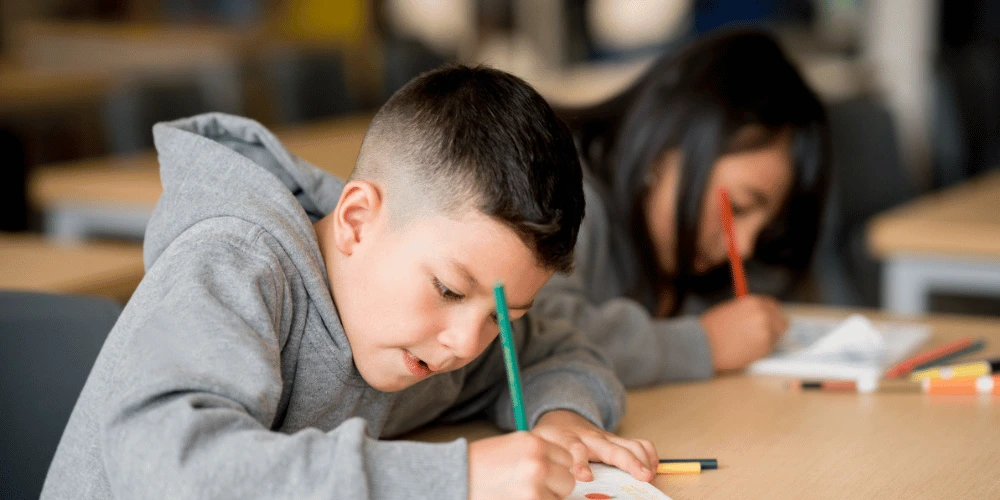UCL Study Shows Record-Breaking Mathematics Achievement Gap in English Schools
Anúncios
The Unprecedented Gender Gap in Mathematics
A Startling 26-Point Difference
The year 2023 marked a significant milestone in the analysis of gender differences in mathematics achievement among students in England.
The University College London (UCL) study revealed a striking 26-point difference in mathematics performance favouring boys over girls.
Anúncios
This dramatic disparity is particularly notable when compared to the mere two-point difference observed in 2019.
Historical Context and Global Comparison
Prior to this, the gender gap in mathematics had been relatively minimal.
Anúncios
For nearly two decades, boys and girls in England performed similarly in mathematics assessments.
However, the 2023 data indicates an unsettling reversal of this trend.
Among the 59 countries studied, which included the US, Canada, and Australia, England reported the largest gender gap.
This points to a broader, international pattern where boys are increasingly outperforming girls in mathematics.
Factors Behind the Gap
Several factors are believed to contribute to this widening gap.
Differences in confidence levels between boys and girls in STEM subjects play a significant role.
Boys generally display higher confidence and a greater interest in pursuing mathematics-related careers.
Additionally, variations in the sense of belonging within the educational environment and attendance patterns may further influence these results.
Educational Implications and Future Perspectives
The findings of this study are being taken seriously by educational authorities.
There is a pressing need for initiatives focusing on promoting confidence and interest in mathematics among girls.
By addressing these underlying issues, educational systems can work towards restoring gender parity in mathematics performance.
As we delve deeper into the contributing factors of the achievement gap, it becomes clear that confidence, sense of belonging, and attendance patterns are intertwined with socioeconomic influences on performance.
Science Performance Disparities
Observed Gaps in Year 9 Science
A worrying trend has emerged in the performance of Year 9 students in science.
In 2023, boys surged ahead of girls with a 14-point lead, a dramatic increase from the modest three-point gap observed in 2019.
This shifts the focus to the significant changes that have taken place in the last few years.
While boys have made substantial gains, the stagnation or slight regression in girls’ performance prompts an examination of underlying factors.

Year 5 Science Scores: A Stable Equilibrium
Interestingly, the scores for Year 5 pupils in science have remained relatively balanced between genders.
This consistency suggests that the disparities seen in older students may develop or become amplified as they progress through the education system.
The maintenance of gender parity in Year 5 indicates that any gaps may not be due to inherent ability but rather external influences that increase with age and complexity of education.
Historical Shifts in Gender Parity
Historically, boys and girls in England have achieved similar scores in both science and mathematics.
However, the recent data shows a break from this tradition, with boys notably outperforming girls in the higher year groups.
This is a significant shift from the historical gender parity, indicating a need for a deeper investigation into why these disparities have grown.
The next step is to explore the contributing factors to these achievement gaps and consider targeted initiatives that can help address this issue.
Equally important is to recognise the role of socioeconomic factors that may exacerbate these disparities and ensure a more inclusive approach to education.
Contributing Factors to the Achievement Gap
Confidence Levels in STEM
One major factor contributing to the gender achievement gap in mathematics and science is the difference in confidence levels between boys and girls.
Studies have shown that boys are generally more confident in their mathematical abilities than girls, which can significantly impact their performance.
This confidence can also influence their willingness to engage with challenging problems and persist through difficulties, leading to better outcomes.
Sense of Belonging and Attendance Patterns
Another critical factor is the sense of belonging students feel in STEM subjects.
Boys often report a stronger sense of belonging in maths and science classes, which can boost their engagement and participation.
On the other hand, girls may feel less included or supported, leading to decreased interest and lower performance.
Additionally, attendance patterns play a role, with absenteeism being more disruptive for girls’ academic progress in these subjects.
Career Aspirations in STEM
Boys show a greater interest in pursuing mathematics-related careers, which further motivates their engagement in the subject.
This career-oriented mindset encourages them to work harder and achieve higher scores in maths and science.
In contrast, girls often express less interest in STEM careers, which can reduce their motivation to excel in these subjects.
These contributing factors, among others, are crucial to understanding why there is such a significant achievement gap between boys and girls in mathematics and science.
Moving forward, it is essential to address these disparities by fostering a more inclusive and supportive environment for all students.
Socioeconomic Influences on Performance
Correlation Between Number of Books at Home and Mathematics Performance
A revealing aspect of the recent UCL study is the link between the number of books at home and students’ performance in mathematics.
Children surrounded by a larger collection of books often exhibit better mathematical skills.
This connection highlights the broader impact of a cognitively stimulating environment on academic achievement.
Having access to various reading materials encourages learning, improves language skills, and indirectly supports mathematical comprehension.
Thus, a home environment rich in resources can significantly tilt the scales in favour of better performance in not just language but also numerical contexts.
Free School Meals Eligibility Linked to Lower Mathematics Achievement
The UCL study also underscores a troubling correlation between free school meals eligibility and lower mathematics achievement.
Pupils from families qualifying for free school meals generally perform worse in maths compared to their peers who do not qualify.
This disparity suggests a deeper socioeconomic divide influencing educational outcomes.
Students from disadvantaged backgrounds may face additional challenges, such as inadequate study resources, leading to less favourable academic results.
This points to the necessity for targeted interventions that address not only academic but also socio-economic barriers to ensure equitable educational opportunities for all students.
Comparison of Student Hunger Levels Across Different Countries
An interesting facet of the study is the comparison of student hunger levels globally.
Pupils in England, as well as in Canada, the US, and Australia, were less likely to report feeling hungry upon arriving at school compared to their counterparts in countries like Japan.
This difference in hunger levels can have profound effects on concentration and performance in school.
Being well-fed is crucial for maintaining high cognitive function and focus, which in turn impacts learning outcomes.
Ensuring students are well-nourished and ready to learn is a fundamental step towards closing the achievement gap.
The findings from these comparisons and correlations emphasize the critical need to address underlying socioeconomic factors to promote equal opportunities for all students.
Creating an educational environment where every child, regardless of their background, can thrive is essential.
The next step involves looking at international strategies and government initiatives to foster a more inclusive atmosphere in our schools.
International Context and Future Initiatives
Comparing England’s Performance to Leading Nations
When we look at England’s educational performance on an international scale, the disparities in achievement, especially in STEM subjects, become even more pronounced.
For mathematics, countries such as Taiwan, Hong Kong, Japan, the Republic of Korea, and Singapore consistently outperform England.
These nations have set a high bar with their robust educational frameworks and cultural emphasis on academic excellence.
Insights from the UCL study suggest that these countries excel through a combination of rigorous curriculum, effective teaching methods, and a supportive home environment.
Government Initiatives to Bridge the Gap
Recognising the urgency of the situation, the UK government remains committed to promoting STEM subjects, particularly among girls.
Schools Minister Catherine McKinnell emphasised the importance of breaking the entrenched link between socioeconomic background and academic success.
The government’s “Plan for Change” includes numerous initiatives aiming to elevate STEM education standards and ensure an inclusive environment.
Among these initiatives, key efforts include:
| 🚀 Initiative | 🎯 Objective |
|---|---|
| 🔬 STEM Engagement Programmes | Interactive workshops and mentorship opportunities to spark interest in STEM subjects. |
| 📚 Teacher Training and Resources | Enhancing teacher training to foster positive attitudes and provide essential STEM resources. |
| 🌟 Campaigns and Role Models | Showcasing female role models in STEM to inspire young girls and address the confidence gap. |
Additionally, an independent, expert-led Curriculum and Assessment Review has been launched.
This review aims to ensure that all students, regardless of their background, receive a state-of-the-art educational experience with strong foundations in mathematics.
The goal is to adapt the curriculum and assessment processes to be more inclusive and reflective of the diverse student population.
By taking these steps, England aims to close the gender gap, support disadvantaged pupils, and elevate overall educational standards.
It is imperative to create an equitable learning environment that nurtures the potential of all students.
The journey toward educational equity is ongoing and requires a sustained, coordinated effort.






